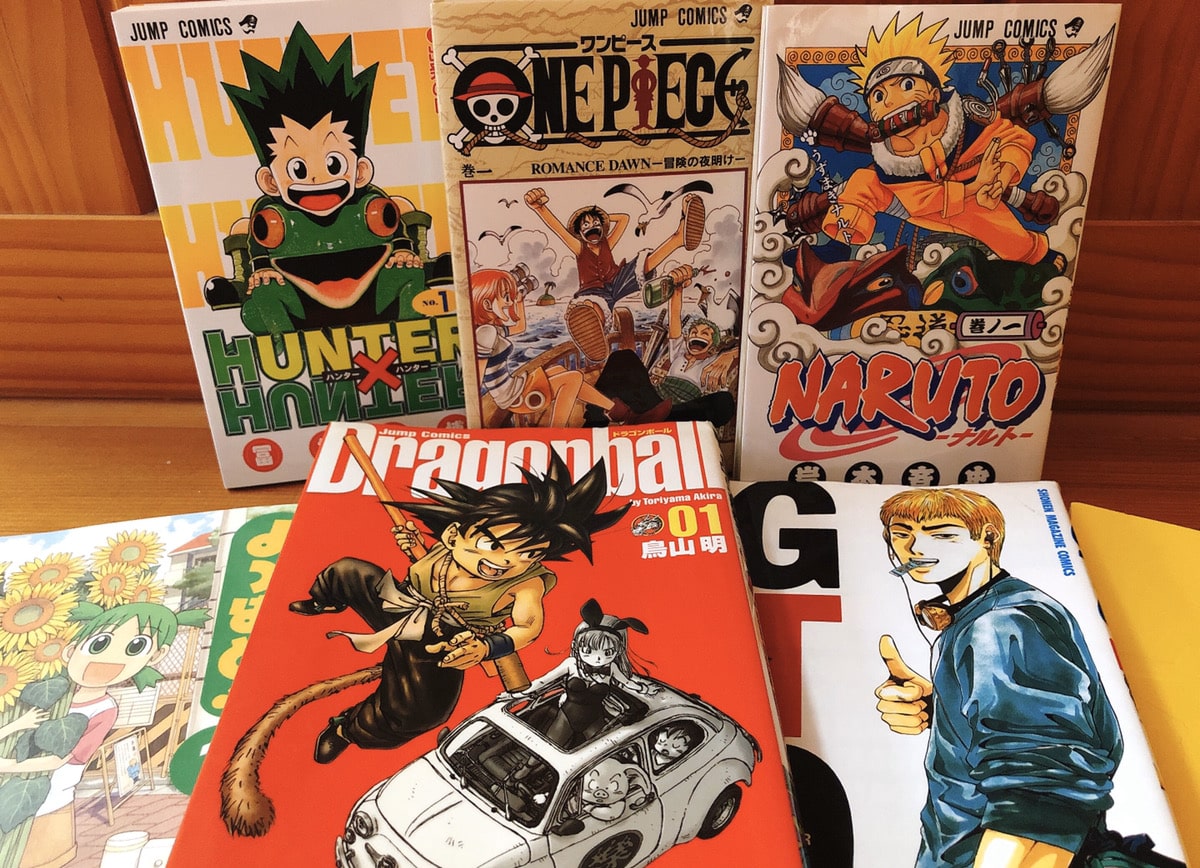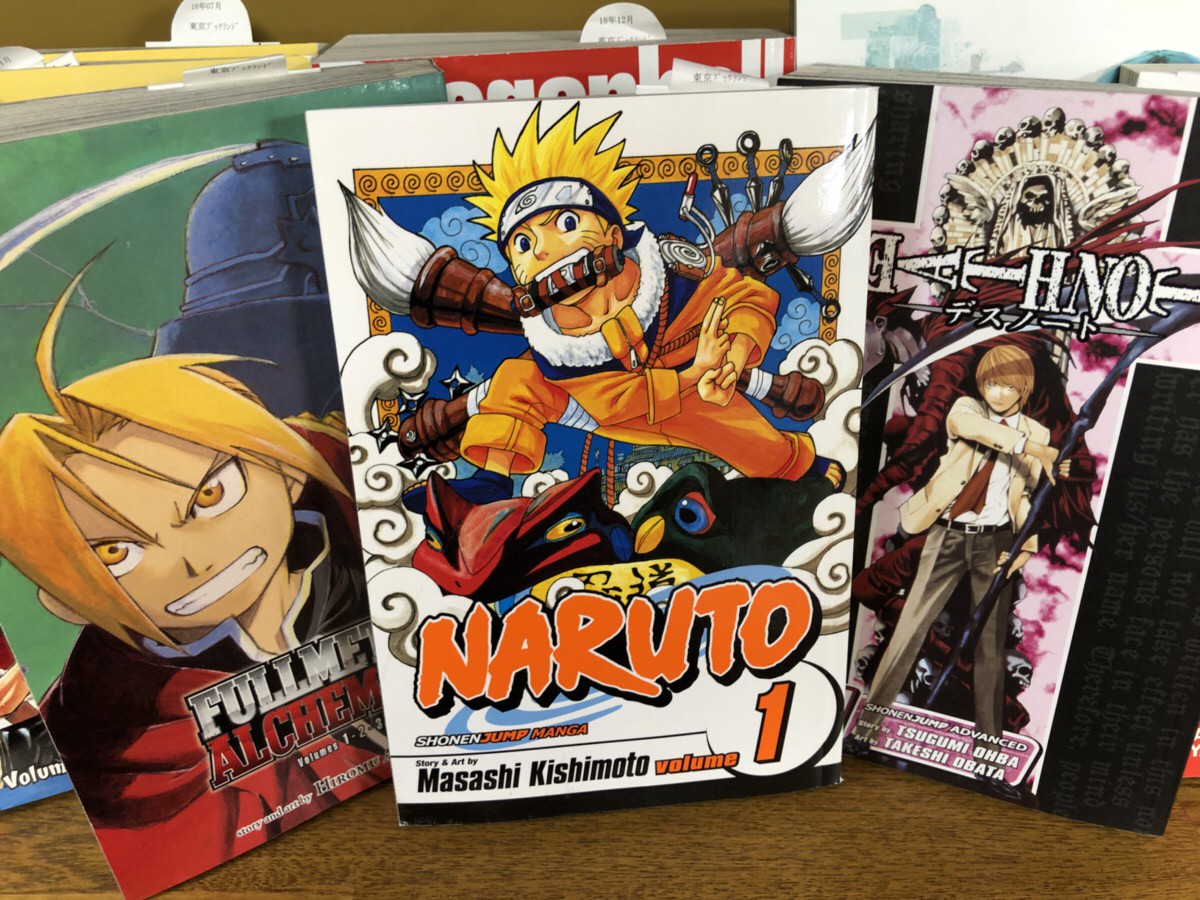Embark On Your Manga Sail: Navigating The Vast World Of Japanese Comics
The world of manga is an expansive ocean, teeming with countless stories, vibrant characters, and artistic styles that captivate millions globally. For newcomers and seasoned enthusiasts alike, embarking on a "manga sail" is an adventure into a rich cultural phenomenon that transcends borders and languages. From the thrilling highs of action-packed sagas to the quiet introspection of slice-of-life tales, manga offers a unique narrative experience unlike any other medium. This journey isn't just about reading; it's about discovering new perspectives, connecting with diverse communities, and exploring the boundless creativity of Japanese storytelling. Whether you're seeking epic fantasies, heartwarming romances, or thought-provoking dramas, the vast seas of manga hold a treasure trove of experiences waiting to be uncovered.
This article serves as your compass and map, guiding you through the essential aspects of manga, helping you understand its profound impact, and showing you how to navigate its ever-evolving landscape. We’ll explore the various genres, delve into the art of storytelling, and discuss the best ways to responsibly enjoy this incredible art form. Prepare to hoist your sails and set forth on an unforgettable journey into the heart of manga.
Table of Contents
- The Allure of Manga: Why We Sail
- Charting Your Course: Discovering Manga Genres
- The Art of Navigation: Understanding Manga Storytelling
- Beyond the Pages: Manga's Global Impact
- The Digital Tides: Where to Manga Sail Online
- Building Your Fleet: Collecting Manga
- The Future of Manga: New Horizons on the Sail
- Setting Your Own Manga Sail: A Personal Journey
The Allure of Manga: Why We Sail
What is it about manga that draws millions into its orbit, compelling them to embark on a lifelong "manga sail"? The answer lies in its unparalleled ability to tell diverse stories with profound emotional depth and stunning visual artistry. Unlike traditional Western comics, manga often features intricate plots that unfold over dozens, sometimes hundreds, of volumes, allowing for meticulous character development and complex world-building. Readers become deeply invested in the lives of characters, celebrating their triumphs and mourning their losses. The visual language of manga, with its dynamic paneling, expressive character designs, and emphasis on conveying emotion through art, creates an immersive experience that few other mediums can match. For instance, whether it's the intense action of a battle or the subtle nuance of a character's internal struggle, manga artists masterfully use their craft to pull readers into the narrative. The sheer variety of themes – from the whimsical concept of "salted fish flying on the road" to the serious drama of a "spoiled brat from a wealthy Japanese family" being shipped off to Korea – ensures there's a story for every taste and mood, making each "manga sail" unique.
- Bobabuttgirl Face
- Mrballen Bells Canyon Shirt
- Lindafromtheplayroom Onlyfans
- Amateur Cameltoe
- News Record In Gillette Wy
Beyond the individual stories, manga offers a cultural window into Japan, reflecting its societal values, historical events, and contemporary trends. It's a medium that embraces experimentation, pushing boundaries in storytelling and art. This constant innovation keeps the medium fresh and exciting, ensuring that there's always something new to discover. The global accessibility, thanks to dedicated publishers and digital platforms, has transformed manga from a niche interest into a mainstream phenomenon, fostering a vibrant international community of fans who share their passion and insights. This collective enthusiasm further enriches the experience, turning a solitary read into a shared journey.
Charting Your Course: Discovering Manga Genres
Before you set your "manga sail," understanding the primary genres is crucial for navigating this vast ocean of stories. Manga is broadly categorized by its target demographic, which often dictates the themes, art style, and narrative focus. This classification helps readers quickly identify series that align with their interests, ensuring a more enjoyable journey. While there are countless subgenres, mastering the main five will provide a solid foundation for your exploration.
Shonen & Shojo: The Main Currents
Shonen manga, targeting young male audiences, is arguably the most popular and globally recognized genre. Characterized by action, adventure, friendship, perseverance, and often a strong emphasis on fighting or competitive elements, shonen series like Dragon Ball, One Piece, and Naruto have defined generations of readers. These stories typically follow a determined protagonist who strives to achieve a grand goal, often overcoming immense challenges with the help of their friends. The themes of self-improvement and loyalty resonate deeply with readers, making shonen a powerful starting point for many on their "manga sail."
In contrast, Shojo manga is aimed at young female readers and often focuses on romance, relationships, and personal growth. While not devoid of action or adventure, the core of shojo lies in emotional development and intricate social dynamics. Series like Fruits Basket and Sailor Moon (a classic example often associated with the concept of "manga sail" due to its widespread popularity and enduring legacy) exemplify the genre's ability to explore complex feelings and the journey of self-discovery. Shojo often features beautiful artwork and delves into the nuances of human connection, offering a different but equally compelling narrative experience.
Seinen & Josei: Deeper Waters
As readers mature, their tastes often evolve, leading them to the more nuanced and adult-oriented genres of seinen and josei. Seinen manga targets adult male audiences and explores a wider range of themes, often with more mature content, psychological depth, and complex narratives. From gritty thrillers and philosophical dramas to realistic slice-of-life stories and historical epics, seinen offers a sophisticated reading experience. Titles like Berserk, Vagabond, and even more contemporary works like those featuring a "hot-blooded part-time hunter with a sense of justice" navigating conflicts between devils and humans, showcase the genre's versatility and willingness to tackle darker or more introspective subjects. The artistic styles can also be more experimental and detailed, catering to a discerning adult readership.
Similarly, Josei manga is aimed at adult female audiences and delves into the complexities of adult relationships, careers, and everyday life with a realistic and often frank approach. Unlike the idealized romances of shojo, josei often portrays more nuanced and sometimes challenging aspects of love, work, and personal identity. Series such as Princess Jellyfish or Honey and Clover offer relatable insights into the struggles and triumphs of young adults, providing a mature perspective on life's journey. These genres represent deeper waters for your "manga sail," offering rich narratives that resonate with the complexities of adult experiences.
The Art of Navigation: Understanding Manga Storytelling
Understanding manga goes beyond just following a plot; it involves appreciating the unique storytelling techniques that make it so compelling. Manga artists are masters of visual narrative, using panel layout, character expressions, and symbolic imagery to convey information, emotion, and pacing. Unlike Western comics that often follow a strict left-to-right reading order, manga is traditionally read from right to left, mirroring Japanese writing. This fundamental difference is the first navigational skill a new reader must acquire, but it quickly becomes second nature.
The pacing in manga can be incredibly varied. Some series, particularly shonen, might have extended action sequences that span multiple chapters, building tension and excitement. Others, like slice-of-life or josei, might dedicate entire chapters to a single conversation or a moment of quiet reflection, allowing for deep character introspection. The use of speed lines, impact frames, and exaggerated expressions are visual cues that enhance the reading experience, guiding the reader's eye and emphasizing key moments. Consider a scenario where "a girl takes a shortcut through the woods one day, and gets caught by a wolf, and almost eaten." A manga artist would use dramatic paneling and visceral expressions to convey the terror, then perhaps a sudden shift in tone and panel layout to reveal the "freak coincidence" that changes everything. This dynamic visual storytelling is a hallmark of manga, making each page a carefully crafted piece of art that propels the narrative forward and draws the reader deeper into the world of the story, ensuring that every "manga sail" is visually stimulating.
Beyond the Pages: Manga's Global Impact
The influence of manga extends far beyond the printed page, shaping global pop culture and inspiring countless artists, writers, and filmmakers worldwide. What began as a distinct Japanese art form has transformed into a universal language of storytelling, captivating audiences from every corner of the globe. The global "manga sail" has led to an explosion in popularity, with manga sales consistently breaking records in Western markets. For example, in 2021, manga sales in the U.S. alone surged by over 160% compared to the previous year, demonstrating its immense and growing appeal. This surge is not just about sales; it's about cultural penetration.
Manga has profoundly influenced animation (anime), video games, fashion, and even traditional literature. Many popular anime series are direct adaptations of successful manga, bringing these stories to an even wider audience. Publishers like Yen Press play a crucial role in this global dissemination, translating and distributing Japanese manga to English-speaking markets. Their efforts ensure that stories, whether about a "spoiled brat from a wealthy Japanese family" or an epic fantasy, reach new readers. The vibrant fan communities, online forums, and conventions dedicated to manga further solidify its global presence, fostering a sense of belonging and shared passion among enthusiasts. This collective engagement ensures that the "manga sail" continues to gain momentum, carrying Japanese narratives to every continent and enriching the cultural landscape.
The Digital Tides: Where to Manga Sail Online
In the modern era, the "manga sail" has largely shifted to digital waters, offering unprecedented accessibility and convenience. While physical volumes remain cherished by collectors, digital platforms have democratized manga consumption, allowing readers to access vast libraries with just a few clicks. Navigating these digital tides requires understanding the various platforms available, both official and unofficial, to ensure a safe and ethical reading experience.
Official Platforms: Safe Harbors
For a responsible and high-quality "manga sail," official digital platforms are your safest harbors. Services like Viz Media's Shonen Jump app, Crunchyroll Manga, ComiXology, and Kodansha's K Manga offer legal access to a wide array of manga titles, often simultaneously with their Japanese release. These platforms directly support the creators and publishers, ensuring the sustainability of the industry. They provide high-resolution images, user-friendly interfaces, and often exclusive content. Subscribing to these services not only gives you access to a vast library but also contributes directly to the artists and writers who bring these stories to life. For instance, if you're looking for the latest chapter of a series like "Toukou Han" or "Mugen Utamaro," checking official sources first is always recommended. This ensures you're consuming content legally and ethically, making your "manga sail" a responsible one.
Community & Fan Translations: Exploring Uncharted Territories
While official platforms are paramount, the manga community has a long history of fan translations, often referred to as "scanlations." These were historically crucial in bringing untranslated manga to Western audiences before official licensing caught up. Websites like manganato.com (as mentioned in the provided data, e.g., "Come visit manganato.com sometime to read the latest chapter of Toukou Han" or "the idolm@ster 2") are examples of sites that host such content. While these platforms can offer access to a wider range of titles, including those not yet officially licensed, it's vital to understand that they operate in a legal gray area and do not directly support the creators. For new readers embarking on their "manga sail," it's recommended to prioritize official sources. If you encounter a series only available via fan translations, consider supporting the creators by purchasing official merchandise or physical volumes once they become available. This approach helps maintain the delicate balance between fan accessibility and artist compensation, ensuring the long-term health of the manga industry.
Building Your Fleet: Collecting Manga
For many enthusiasts, the "manga sail" isn't complete without building a physical collection. There's a unique joy in holding a beautifully illustrated volume, flipping through its pages, and admiring the artwork in print. Collecting manga allows fans to physically possess the stories they love, creating a personal library that reflects their journey through the medium. This aspect of manga consumption is a significant part of its appeal, offering a tangible connection to the art form. The tactile experience of reading a physical book, the smell of the paper, and the aesthetic appeal of a curated bookshelf are all part of the allure. Publishers like Yen Press, mentioned earlier, are instrumental in bringing these physical editions to Western markets, ensuring high-quality translations and production values.
Collecting manga also involves supporting the industry directly. Every purchase contributes to the success of the series, encouraging creators to continue their work and publishers to license more titles. Beyond individual volumes, many collectors seek out special editions, box sets, or limited releases, which often feature exclusive artwork, bonus content, or unique packaging. These items become prized possessions, reflecting the depth of a fan's dedication. Building a manga collection is a personal journey, a testament to the stories that have resonated with you, and a way to preserve the art form for future generations. It's an investment in your passion, making your "manga sail" a tangible and lasting experience.
The Future of Manga: New Horizons on the Sail
The "manga sail" is far from over; in fact, it's constantly charting new horizons. The industry is dynamic, adapting to technological advancements and evolving reader preferences. One significant trend is the rise of webtoons and digital-first manga, often published in full color and optimized for vertical scrolling on smartphones. This format is attracting a new generation of readers and creators, particularly outside Japan, fostering a more globalized and diverse landscape for comic storytelling. This shift indicates a broadening of the definition of "manga" itself, embracing influences from various cultures and digital innovations.
Furthermore, manga continues to push boundaries in terms of content and representation. More diverse voices are emerging, telling stories that reflect a wider array of experiences and perspectives. The global success of manga has also led to increased collaboration between Japanese creators and international artists, leading to exciting new hybrid forms of storytelling. The industry is also exploring new ways to engage with fans, through interactive digital experiences, virtual events, and personalized recommendations powered by AI. As technology advances and global connections strengthen, the future of manga promises even more innovative narratives, diverse talent, and accessible platforms, ensuring that the "manga sail" remains an exciting and ever-expanding journey for years to come. The possibilities are as vast as the ocean itself, with new tales and artistic expressions continually emerging.
Setting Your Own Manga Sail: A Personal Journey
Ultimately, embarking on a "manga sail" is a deeply personal journey. There's no single right way to explore this incredible medium. Your path will be unique, shaped by your interests, discoveries, and the connections you make along the way. Whether you prefer the high-octane adventures of shonen, the intricate relationships of shojo, the mature themes of seinen, or the slice-of-life charm of josei, the world of manga welcomes you with open arms. Don't be afraid to experiment with different genres and artists; sometimes, the most unexpected stories, like a "vampire master" or "colorful days" that seem simple but hold profound depth, will become your favorites. The beauty of manga lies in its boundless diversity, offering something for everyone.
As you continue your journey, remember to support the creators and publishers who make this art form possible by utilizing official platforms and purchasing licensed products. If you have any question about this manga, please don't hesitate to reach out to the vibrant online communities or local comic shops for recommendations and discussions. The manga community is a welcoming one, eager to share insights and help fellow enthusiasts navigate the vast seas of stories. So, hoist your sails high, embrace the adventure, and enjoy every moment of your ongoing "manga sail." The next great story is always just around the corner, waiting to be discovered.

25 Best Manga of All Time - Japan Web Magazine

10 Best Popular Japanese Manga to Read in English - Japan Web Magazine

Manga Wallpapers on WallpaperDog